虚拟现实
2016-06-02
虚拟现实
·编者按·
虚拟现实(Virtual Reality,VR),从最基本的字面意思来解释就是“虚幻的真实”,可以定义为“采用以计算机技术为核心的现代高技术生成逼真的视、听、触觉一体化的一定范围的虚拟环境,用户可以借助专门装备以自然的方式与虚拟环境中的物体进行交互作用、相互影响,从而获得亲临对应真实环境的感受和体验”。虚拟现实具有沉浸感、交互性、构想性三个特性,即(Imagination、Interaction、Immersion,3I)。虚拟现实的主要研究问题包括四类:分别是:(1)真实环境感知和理解;(2)虚拟场景建模和绘制;(3)逼真呈现和自然交互;(4)应用系统开发和集成。虚拟现实技术在20世纪60—70年代兴起,90年代开始形成和发展,其在仿真训练、工业设计、交互体验等多个应用领域解决了一些重大或普遍性需求,目前在理论技术与应用开展等方面都取得了很大进展。在VR技术发展的基础上,又出现了增强现实(Augmented Reality,AR)技术。将虚拟环境与现实环境进行匹配合成以实现增强,其中将三维虚拟对象叠加到真实世界显示的技术称为增强现实,将真实对象的信息叠加到虚拟环境绘制的技术称为增强虚拟环境。
VR/AR技术可以应用到军事、航天、文化、娱乐、安全、工程、商业、教育医疗以及艺术等多个领域。高盛分析报告预计,到2025年,市场规模将达到800亿美元。目前,微软、谷歌、索尼、惠普、高通等著名科技公司都涉足于这一技术的研发。
本专题得到陈定方教授(武汉理工大学)、刘越教授(北京理工大学)的大力支持。
·热点数据排行·
截至2016年3月21日,中国知网(CNKI)和Web of Science(WOS)的数据报告显示,以“虚拟现实”为词条可以检索到的期刊文献分别为4028条与2303条,本专题将相关数据按照:研究机构发文数、作者发文数、期刊发文数、被引用频次进行排行,结果如下。
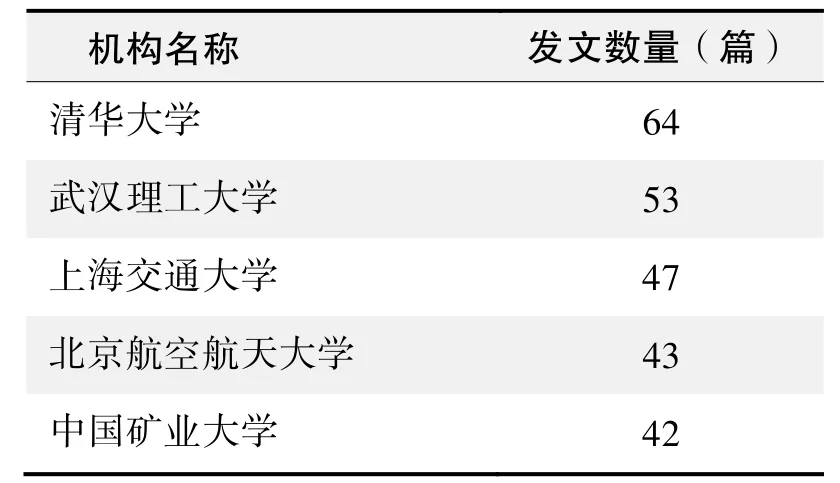
研究机构发文数量排名(CNKI)
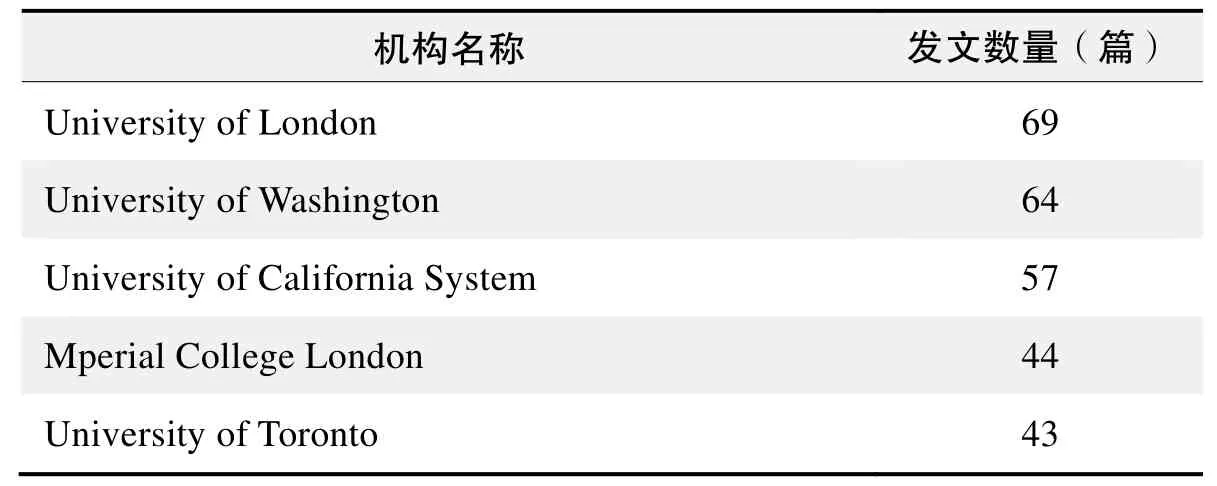
研究机构发文数量排名(WOS)
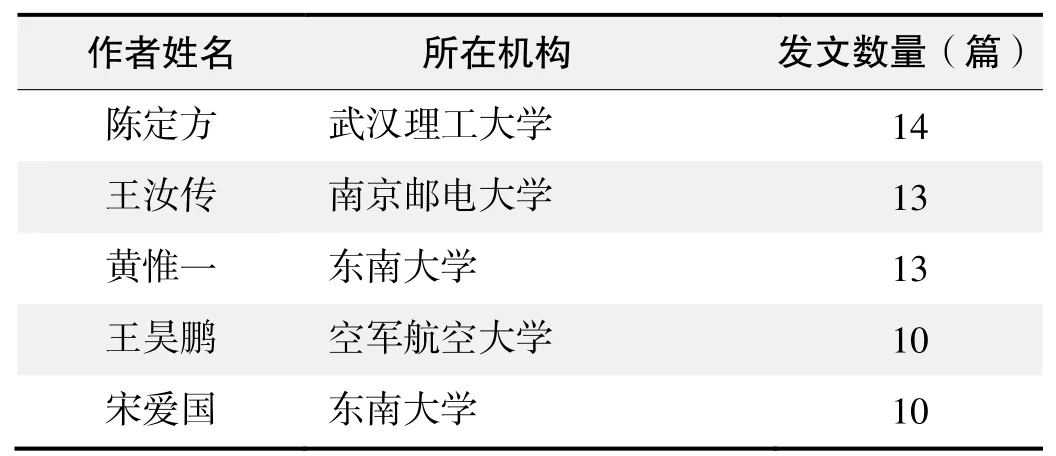
作者发文数量排名(CNKI)
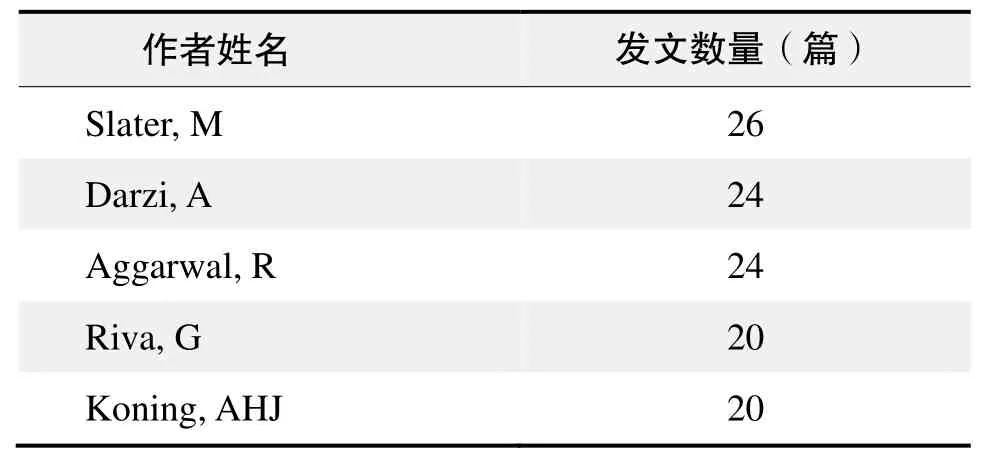
作者发文数量排名(WOS)
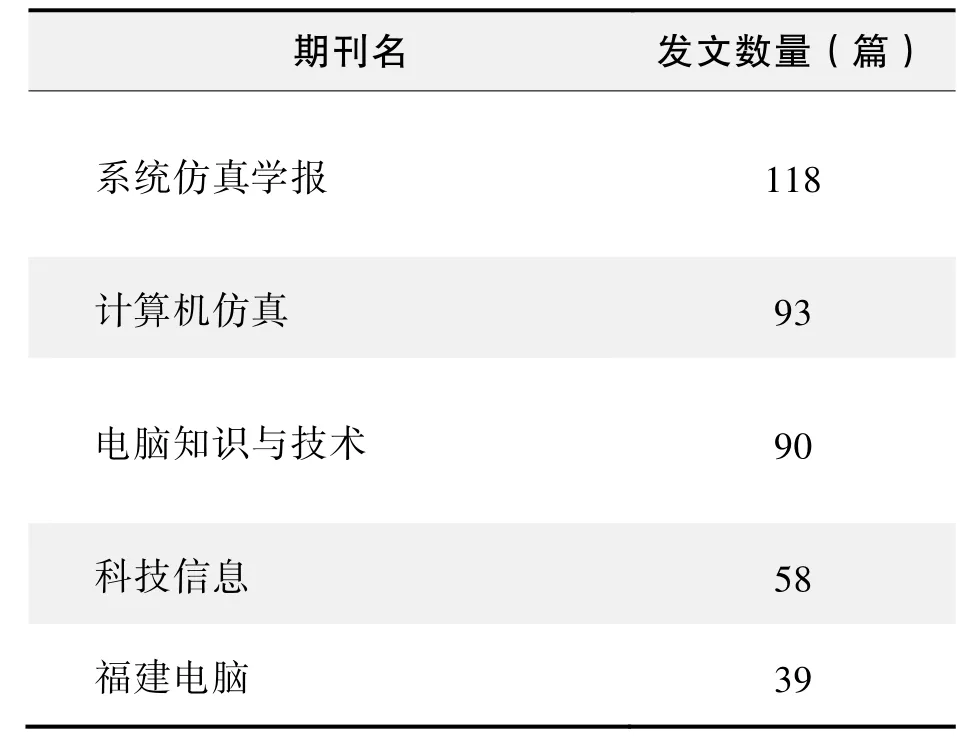
期刊发文数量排名(CNKI)

期刊发文数量排名(WOS)
根据中国知网(CNKI)数据报告,以“虚拟现实”为词条可以检索到的高被引论文排行结果如下。

国内数据库高被引论文排行
根据Web of Science统计数据,以“虚拟现实”为词条可以检索到的高被引论文排行结果如下。
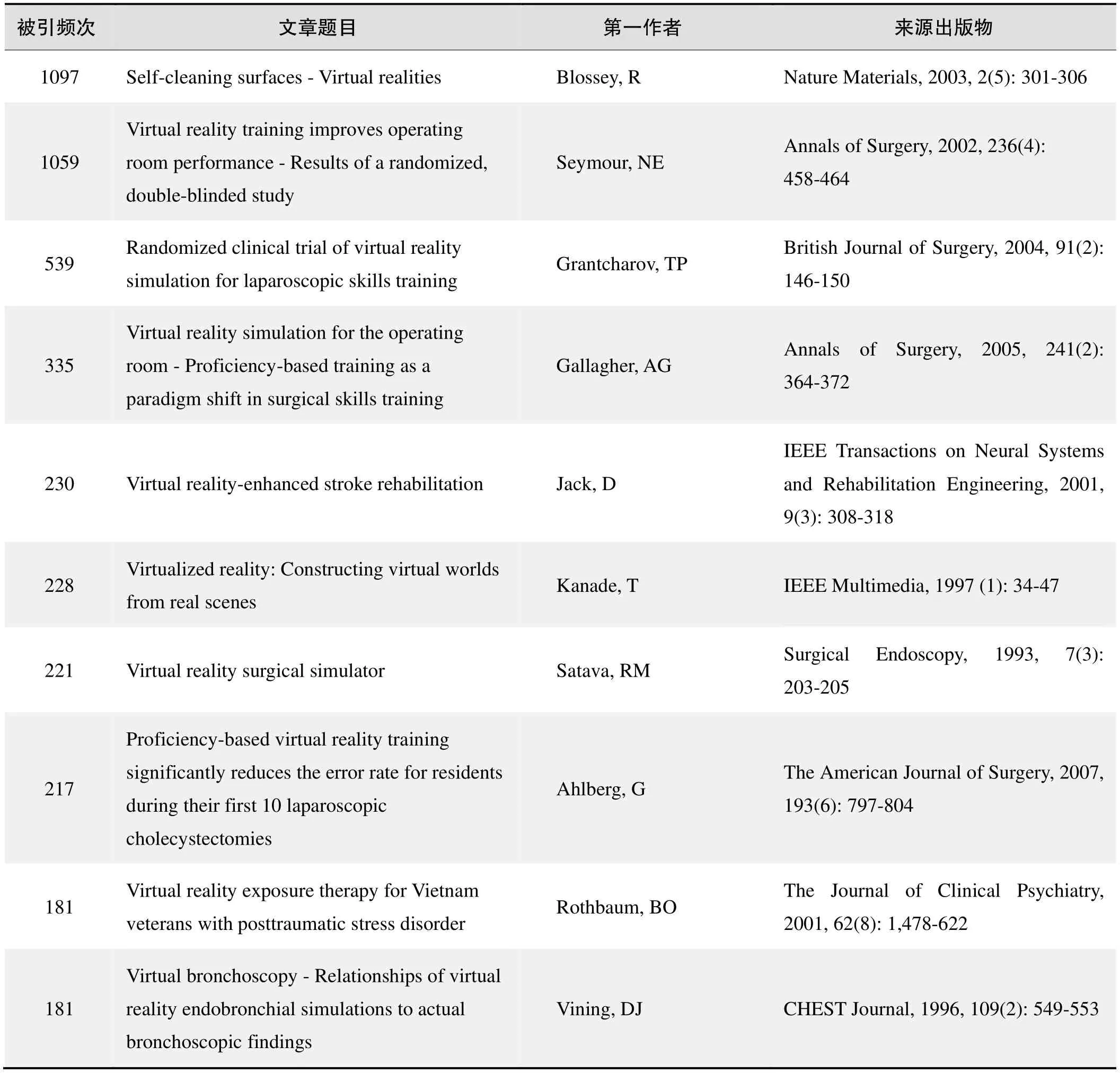
国外数据库高被引论文排行
·经典文献推荐·
基于Web of Science检索结果,利用Histcite软件选取LCS(Local Citation Score,本地引用次数)TOP50文献作为节点进行分析,得到本领域推荐的经典文献如下。
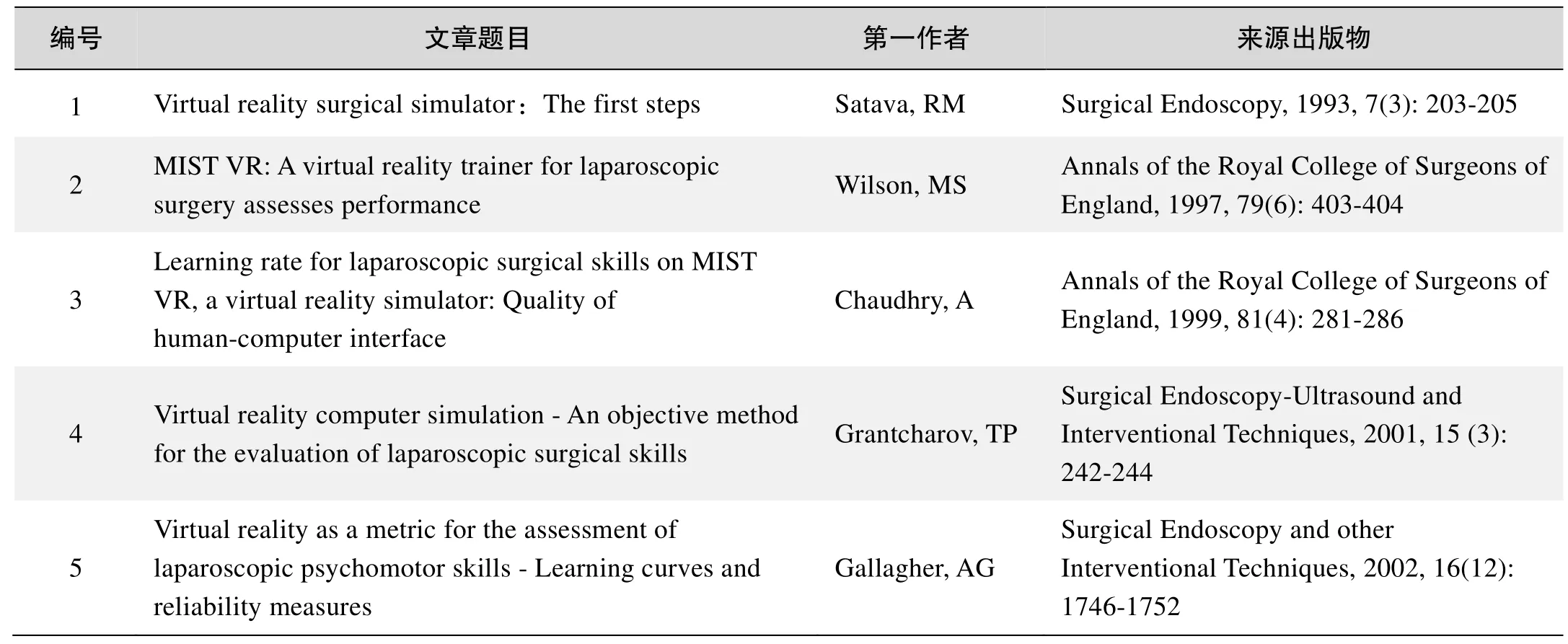
本领域经典文献
Wilson, MS; Middlebrook, A; Sutton, C; et al.
来源出版物: Annals of the Royal College of Surgeons of England, 1997, 79(6): 403-404
Learning rate for laparoscopic surgical skills on MIST VR, a virtual reality simulator: Quality of human-computer interface
Chaudhry, A; Sutton, C; Wood, J; et al.
来源出版物: Annals of the Royal College of Surgeons of
England, 1999, 81(4): 281-286
Virtual reality computer simulation - An objective method for the evaluation of laparoscopic surgical skills
Grantcharov, TP; Rosenberg, J; Pahle, EE; et al.
来源出版物: Surgical Endoscopy-Ultrasound and Interventional Techniques, 2001, 15 (3): 242-244
Virtual reality as a metric for the assessment of laparoscopic psychomotor skills - Learning curves and reliability measures
Gallagher, AG; Satava, RM
来源出版物: Surgical Endoscopy and other Interventional Techniques, 2002, 16(12): 1746-1752
·推荐综述·
来源出版物: Surgical Endoscopy, 1993, 7(3): 203-205
MIST VR: A virtual reality trainer for laparoscopic surgery assesses performance
Virtual reality surgical simulator:The first steps
Satava, RM
Abstract:The virtual-reality surgical simulator signals the beginning of an era of computer simulation for surgery. The surgical resident of the future will learn new perspectives on surgical anatomy and repeatedly practice surgical procedures until they are perfect before performing surgery on patients. Primitive though these initial steps are, they represent the foundation for an educational base that will be as important to surgery as the flight simulator is to aviation. It is anticipated that the full development of the surgical simulator will take less than the 40 years which was required for flight simulators to become an indispensable ingredient of pilot training. As the system evolves, many new and yet-to-be-imagined applications will arise, but we must have understanding and patience as we wait for computer power to improve to a point where VR surgical simulation can emerge from its PacMan era. omitted. Acquiring laparoscopic surgical skills involves initial learning of cognitive and motor skills followed by refinement of those skills. The successful use of a virtual reality simulator depends on the quality of the interface for the human-computer interaction and this can be determined by the initial learning rate. MIST VR, a part-task virtual reality laparoscopic simulator, provides objective assessment of psychomotor skills and can generate an overall score for performance, based upon errors made and time taken for six different tasks. This study analysed the rate of early task/instrument/computer familiarisation on consecutive scores achieved by surgically experienced and naive individuals. Eleven surgeons, 18 medical students and seven non-medical personnel were tested on the simulator up to ten consecutive times, within a 2-week period. Performance data from every task and repetition were analysed to obtain individual scores of task performance. The calculation of overall score penalised errors far morebook=11,ebook=15heavily than total time taken, with high scores indicating poor performance. The surgeon-computer interface generated a rapid and significant early familiarisation curve up to the third session on the simulator, with significant reductions in both time taken and total contact errors made. These results suggest that MIST VR represents a high quality interface. Surgeons scored consistently and significantly better than other subjects on all tasks. For surgically naive individuals, it was possible to predict the level of laparoscopic skills performance that would be attained after overcoming initial simulator learning curve, by studying their initial score. Overall scores reflected surgical experience and suggest that the simulator is measuring surgically relevant parameters. MIST VR provides a validated and much needed method for objective assessment of laparoscopic skills, for a variety of surgical disciplines. Background: Objective assessment of psychomotor skills should be an essential component of a modern surgical training program. There are computer systems that can be used for this purpose, but their wide application is not yet generally accepted. The aim of this study was to validate the role of virtual reality computer simulation as a method for evaluating: surgical laparoscopic skills. Methods: The study included 14 surgical residents. On day 1, they performed two runs of all six tasks on the Minimally Invasive Surgical Trainer, Virtual Reality (MIST-VR), On day 2, they performed a laparoscopic cholecystectomy on living pigs; afterward, they were tested again on the MIST-VR. A group of experienced surgeons evaluated the trainees’ performance on the animal operation, giving scores for total performance error and economy of motion. During the tasks on the MIST-VR, errors and noneconomy of movements for the left and right hand were also recorded. Results: There were significant correlations between error scores in vivo and three of the six in vitro tasks (P<0.05). In vivo economy scores correlated significantly with noneconomy right-hand scores for five of the six tasks and with non-economy left-hand scores for one of the six tasks (P<0.05). Conclusion: In this study, laparoscopic performance in the animal model correlated significantly with performance on the computer simulator. Thus, the computer model seems to be a promising objective method for the assessment of laparoscopic psychomotor skills. Background: The objective assessment of the psychomotor skills of surgeons is now a priority; however, this is a difficult task because of measurement difficulties associated with the assessment of surgery in vivo. In this study, virtual reality (VR) was used to overcome these problems. Methods: Twelve experienced (>50 minimalaccess procedures), 12 inexperienced laparoscopic surgeons (<10 minimal-access procedures), and 12 laparoscopic novices participated in the study. Each subject completed 10 trials on the Minimally Invasive Surgical Trainer; Virtual Reality (MIST VR). Results: Experienced laparoscopic surgeons performed the tasks significantly (P<0.01) faster, with less error, more economy in the movement of instruments and the use of diathermy, and with greater consistency in performance. The standardized coefficient alpha for performance measures ranged from alpha=0.89 to 0.98, showing high internal measurement consistency. Test-retest reliability ranged from r=0.96 to r=0.5. Conclusion: VR is a useful tool for evaluating the psychomotor skills needed to perform laparoscopic surgery.
